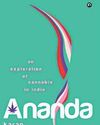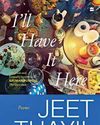
THE NOBEL PRIZE in Medicine, in 2021, was awarded to David Julius of the University of California, San Francisco and Ardem Pata-poution of Scripps Research Institute in La Jolla, California, for their discovery of receptors for temperature and touch. These were based on a food so ubiquitous it is difficult to imagine Indian cuisine without it. And yet, it hasn't been with us very long. Like the tomato, the potato, the sapota and chocolate, it was a gift from the Aztecs cultures and other Native American annihilated by Europeans. As they rampaged round the globe, marauding European hordes distributed their plunder of horticultural skill among other cultures. After the Portuguese had massacred Goa (1510), they consoled us with chilli. From 1510 to 2021, chilli has had a brilliant global career, crowned by the Nobel Prize. It is a suitable moment to reconsider this burning fruit of genocide.
The Nobel was awarded for an investigation centred on chilli's principal ingredient, capsaicin, which stings the tongue with unbearable heat. Today, the heat of chilli is culinary machismo. Chilli fresh green, dried red, powdered, or ground down to its essence-spikes every dish like a snarl of barbed wire. Why does chilli, and specifically capsaicin, burn?
In 1997, Julius discovered a receptor for capsaicin. Soon, he found that this receptor could be activated by heat as well-so this was a receptor that transmitted the message 'burn' to the brain.
This story is from the March 2023 edition of Reader's Digest India.
Start your 7-day Magzter GOLD free trial to access thousands of curated premium stories, and 9,000+ magazines and newspapers.
Already a subscriber ? Sign In
This story is from the March 2023 edition of Reader's Digest India.
Start your 7-day Magzter GOLD free trial to access thousands of curated premium stories, and 9,000+ magazines and newspapers.
Already a subscriber? Sign In

ME & MY SHELF
Siddharth Kapila is a lawyer turned writer whose writing has focussed on issues surrounding Hinduism. His debut book, Tripping Down the Ganga: A Son's Exploration of Faith (Speaking Tiger) traces his seven-year-long journey along India's holiest river and his explorations into the nature of faith among believers and skeptics alike.

EMBEDDED FROM NPR
For all its flaws and shortcomings, some of which have come under the spotlight in recent years, NPR makes some of the best hardcore journalistic podcasts ever.

ANURAG MINUS VERMA PODCAST
Interview podcasts live and die not just on the strengths of the interviewer but also the range of participating guests.

WE'RE NOT KIDDING WITH MEHDI & FRIENDS
Since his exit from MSNBC, star anchor and journalist Mehdi Hasan has gone on to found Zeteo, an all-new media startup focussing on both news and analysis.

Ananda: An Exploration of Cannabis in India by Karan Madhok (Aleph)
Karan Madhok's Ananda is a lively, three-dimensional exploration of India's past and present relationship with cannabis.

I'll Have it Here: Poems by Jeet Thayil, (Fourth Estate)
For over three decades now, Jeet Thayil has been one of India's pre-eminent Englishlanguage poets.

Orbital by Samantha Harvey (Penguin Random House India)
Samantha Harvey became the latest winner of the Booker Prize last month for Orbital, a short, sharp shock of a novel about a group of astronauts aboard the International Space Station for a long-term mission.

She Defied All the Odds
When doctors told the McCoombes that spina bifida would severely limit their daughter's life, they refused to listen. So did the little girl

DO YOU DARE?
Two Danish businesswomen want us to start eating insects. It's good for the environment, but can consumers get over the yuck factor?

Searching for Santa Claus
Santa lives at the North Pole, right? Don't say that to the people of Rovaniemi in northern Finland